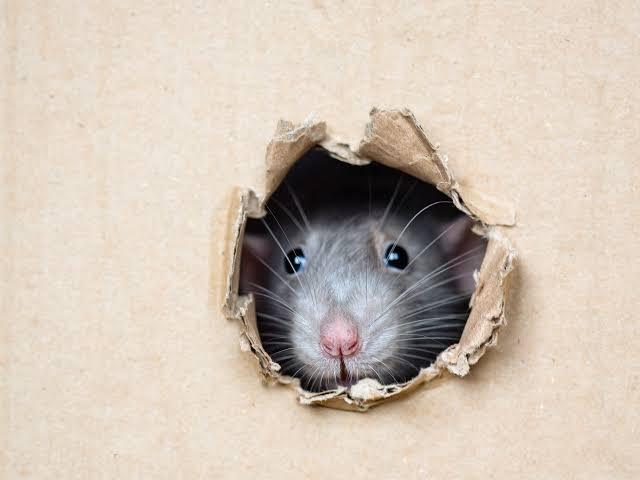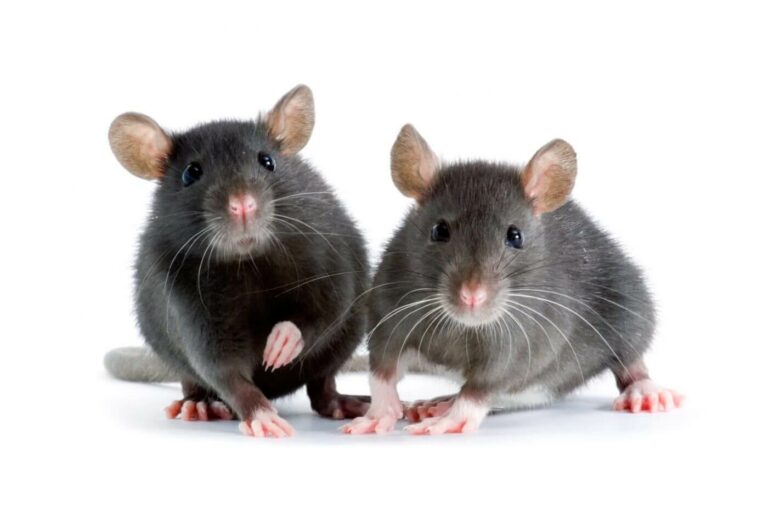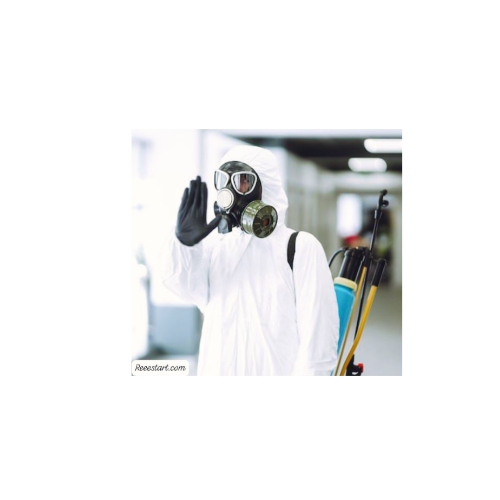Here, we are going to present A Comprehensive Guide to Rodent Control for Pest Control Engineers in the UAE, where urban expansion and climate create ideal conditions for rodent activity, pest control engineers play a critical role in safeguarding properties and public health. Rodents, such as rats and mice, not only damage infrastructure and contaminate food supplies but also pose significant health risks through the transmission of various diseases.
Comprehensive Guide to Rodent Control for Pest Control Engineers in the UAE
As pest control engineers, your expertise is essential in implementing effective rodent control strategies that address both immediate infestations and long-term prevention.
This comprehensive guide delves into advanced rodent control techniques tailored to the unique challenges of the UAE environment. From identifying key rodent species and understanding their behaviors to deploying innovative prevention methods and treatment solutions, this resource aims to enhance your ability to manage rodent issues efficiently and effectively. Equip yourself with the knowledge needed to combat rodent problems and protect both your clients’ properties and public health.
Rodents, apart from their frightening and disgusting appearance, cause damage to everything in their path by gnawing and destroying items, especially in warehouses, storage facilities, residential apartments, and by feeding on and ruining crops.
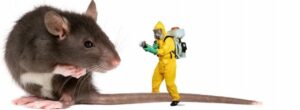
Diseases Transmitted by Rodents
Controlling rodents is crucial as they transmit many serious diseases and epidemics due to their internal and external parasites.
Viral Diseases
- Hantavirus, A deadly virus that can infect the lungs.
- Lymphocytic choriomeningitis, Mice can transmit this virus to humans.
- Rabies Viruses.
Plague
- Bubonic Plague
- Septicemic Plague
- Pneumonic Plague
When plague spreads among rats, it leads to their death. Fleas then leave the dead rats and seek new hosts, attacking humans. Bubonic plague is transmitted to humans through flea bites infected with plague bacteria. Pneumonic plague is highly infectious, especially in crowded, poorly ventilated areas.
Other Diseases
- Rift Valley Fever, West Nile Fever.
- Cutaneous and visceral leishmaniasis.
- Salmonella bacteria causing food poisoning.
- Rat-bite fever
- Typhus.
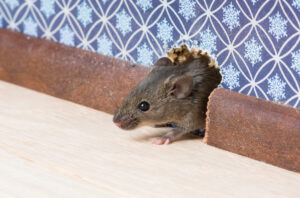
General Characteristics of Rodents (Rats)
- Highly sensitive with an acute ability to detect sounds, smells, and textures.
- Can pass through very narrow openings.
- Move along walls and avoid making the same mistake twice.
- Some are proficient swimmers, even in sewers and drains.
- Not active during the day; daytime sightings may indicate a large infestation.
- Can dig burrows into buildings if doors and floors are not rodent-proof.
- Avoid open spaces and some can climb walls, jump, and walk on wires.
- Unique among mammals due to having a pair of continuously growing incisors in both upper and lower jaws, which they keep trimmed by gnawing.
- Covered with fur except for the tail.
- Primarily herbivores but will consume almost anything, including wood, paper, meat, and even other dead rats.
- Typically live around 1.5 to 3 years if they survive predators and human control efforts.
- Reproduce rapidly, with a single pair potentially producing over 2,000 offspring in a year.
Common Rodent Species
In the following lines, we will focus on common Rodent Species:
Norway Rat (Rattus norvegicus)
- Brown with a rough texture and gray base.
- Droppings are large and capsule-shaped.
- Gestation is 22 days; 3-8 litters per year with 7-8 pups per litter.
- Prefers protein-rich foods.
- Causes holes about 8 cm in diameter, typically in lower floors.
Roof Rat (Rattus rattus)
- It’s colour Black.
- Droppings are spindle-shaped with pointed ends.
- Gestation is 22 days; 5 litters per year with 2-6 pups per litter.
- Prefers sugary foods.
- Causes holes about 6 cm in diameter, usually in upper floors.
House Mouse (Mus musculus)
- Grayish-brown back with a gray belly.
- Droppings are small and pointed.
- Gestation is 19 days; 7-8 litters per year with 4-16 pups per litter.
- Prefers high-sugar and high-protein foods like grains and seeds.
- Can survive with minimal water by obtaining moisture from its food.
- Causes holes about 2 cm in diameter.
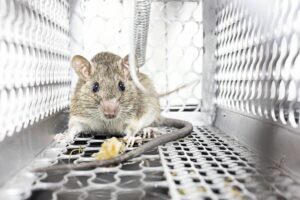
Signs of Rodent Infestation
- Presence of droppings and distinctive, unpleasant odors.
- Gnaw marks on food, packages, papers, etc.
- Burrows, trails, and sightings of live or dead rodents.
- Foot and tail tracks in powder spread in suspected areas.
- Behavioral changes in pets like cats and dogs.
- Hearing sounds of rodents competing for food or moving around.
Preventive Measures Against Rodents
- Seal roofs and avoid gaps.
- Build and maintain well-sealed storage facilities.
- Ensure windows and doors fit tightly without gaps.
- Seal drains and openings.
- Avoid leaving waste or refuse near buildings.
- Seal burrows and cracks with cement or other materials.
- Manage pet and bird food to av
- oid attracting rodents.
- Use ultrasonic devices to repel rodents.
Rodent Control Methods
There are too many Methods you can choose from to control Rodents:
Mechanical Methods
- Traps, Used in homes, storage facilities, stables, and pigeon lofts.
- Various designs (box traps, glue boards, metal traps).
- Bait with attractive food and check daily.
- Handle with care to prevent spreading parasites.
Glue Boards
- Attract and trap rodents using strong adhesive surfaces.
Chemical Methods
- Poison Baits, Rodenticides can be toxic to both rodents and humans.
- Begin with non-toxic bait to acclimate rodents, then introduce poison.
Some poisons include:
- Acute Toxins: E.g., zinc phosphide, which requires mixing with attractants and may take several days to show effects.
- Anticoagulants: E.g., warfarin, bromadiolone, which cause internal bleeding and take days to be effective.
Fumigation
- Using fumigants in burrows and tunnels by certified professionals.
- Dusts, Powders that irritate the skin and are ingested when rodents groom themselves.
Important Notes
- Rodenticides should be odorless and have acute symptoms to avoid alerting remaining rodents.
- Baits should be placed in tamper-proof stations to ensure safety.
- A combination of prevention and treatment methods should be used regularly.
Handling Poisoned Rodents
If a pet ingests rodent poison:
- Immediate Action, Seek veterinary care if a pet eats rodent poison. Rodents often require multiple doses to be lethal.
- Symptoms, include weakness, nosebleeds, blood in feces, skin bruising, abdominal swelling, and breathing difficulties.
- Treatment, Vitamin K1 is used as an antidote, and the pet should be monitored closely.
- Prevention,Always monitor pets and children around rodent control areas and ensure bait stations are secure and out of reach.
Cleaning and Safety
When cleaning rodent-infested areas:
- Ventilation: Air out the space for at least 30 minutes before cleaning.
- Avoid Dust, Do not sweep or vacuum droppings; instead, use damp cloths.
- Protect Yourself, Wear rubber gloves and use disinfectants.
- Disposal, Clean contaminated areas with a bleach solution (1 part bleach to 9 parts water).
- Personal Hygiene Wash hands thoroughly after handling contaminated materials.
Addressing Customer Concerns
Response to Pet Poisoning:
- A single dose of poison is unlikely to be fatal immediately; multiple doses or ingestion by a poisoned rodent is necessary.
- Symptoms take days to manifest, and treatment with Vitamin K1 can be effective if administered in time.
- Ensure that poison stations are secure and regularly monitored.
Protocol Verification
- Confirm that bait stations are secure and regularly checked.
- Train staff and verify certification with relevant authorities.
Monitoring and Prevention
- Continuously monitor for and address any signs of rodent activity.
- Use appropriate bait and monitoring techniques to ensure effectiveness.

